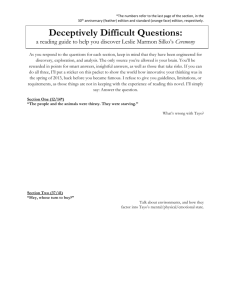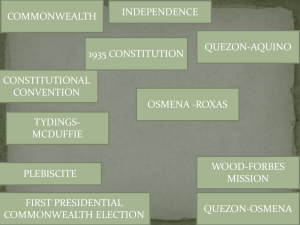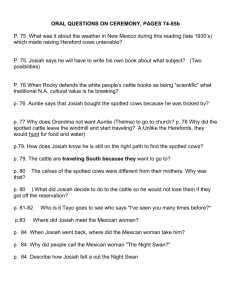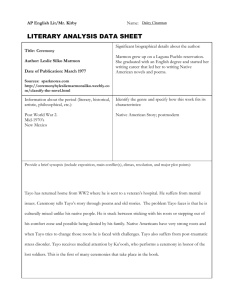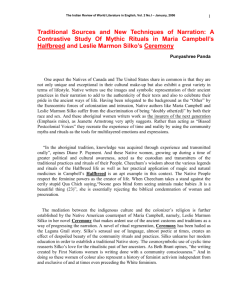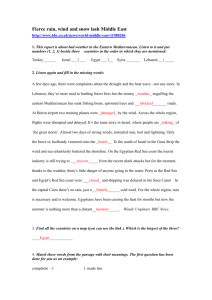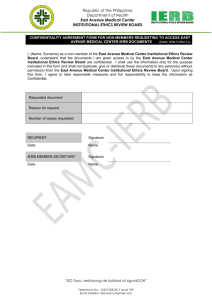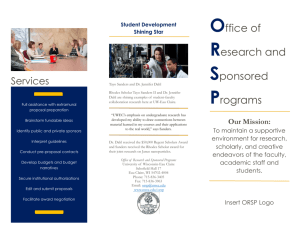Amanda Hartzell
advertisement
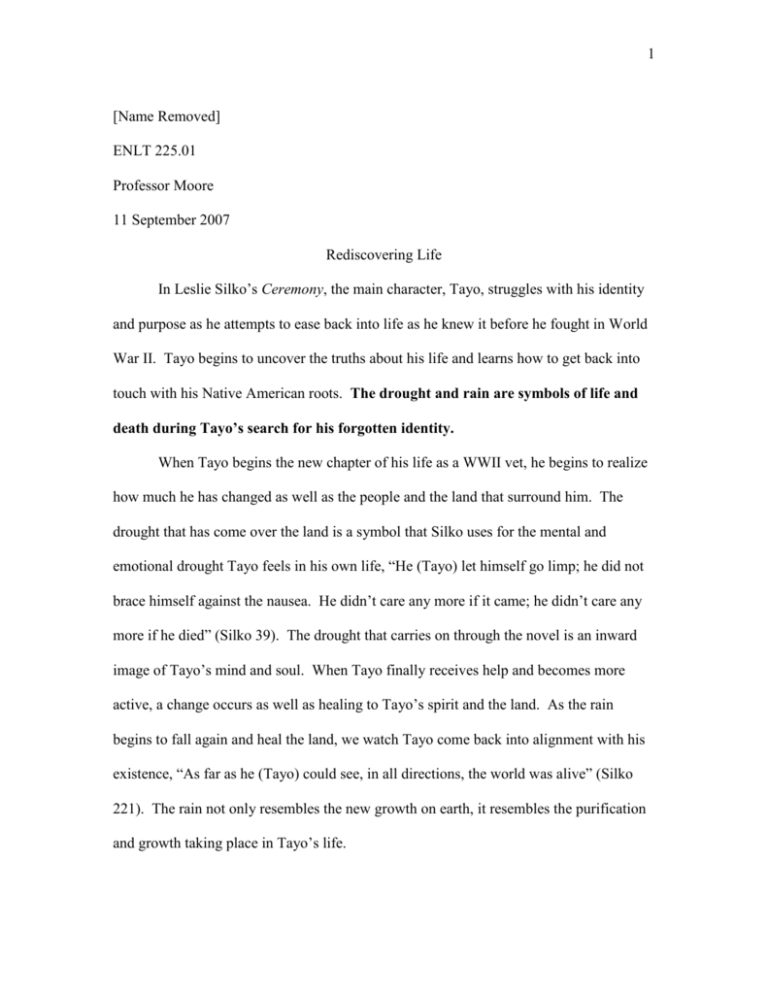
1 [Name Removed] ENLT 225.01 Professor Moore 11 September 2007 Rediscovering Life In Leslie Silko’s Ceremony, the main character, Tayo, struggles with his identity and purpose as he attempts to ease back into life as he knew it before he fought in World War II. Tayo begins to uncover the truths about his life and learns how to get back into touch with his Native American roots. The drought and rain are symbols of life and death during Tayo’s search for his forgotten identity. When Tayo begins the new chapter of his life as a WWII vet, he begins to realize how much he has changed as well as the people and the land that surround him. The drought that has come over the land is a symbol that Silko uses for the mental and emotional drought Tayo feels in his own life, “He (Tayo) let himself go limp; he did not brace himself against the nausea. He didn’t care any more if it came; he didn’t care any more if he died” (Silko 39). The drought that carries on through the novel is an inward image of Tayo’s mind and soul. When Tayo finally receives help and becomes more active, a change occurs as well as healing to Tayo’s spirit and the land. As the rain begins to fall again and heal the land, we watch Tayo come back into alignment with his existence, “As far as he (Tayo) could see, in all directions, the world was alive” (Silko 221). The rain not only resembles the new growth on earth, it resembles the purification and growth taking place in Tayo’s life. 2 The journey of rediscovering the purpose driven life was a difficult road for Tayo to travel on, however, hard as it was, the outcome for Tayo was a fresh new meaning to life and his purpose as a Native American. The drought was the symbol of Tayo being lost, broken, and ready to surrender while the rain symbolized hope, healing, and a new purpose for living. 3 Works Cited Silko, Leslie Marmon. Ceremony. New York: Penguin, 1986. Lovely prose and clear expression. However, note how much of the discussion paragraph is “narrative summary.” It does a good job of summarizing the plot, themes, and symbols, but it is closer to observation than analysis. A gauge is the question, “Is it arguable?” Can someone say, “No the drought and rain do not represent Tayo’s sickness and healing”? The steps to analysis are more specificity. For example, here’s a sample revision of your thesis: “Expressing a Native sense of kinship with nature [ = so what], Silko portrays the drought & the rain in two ways, literally and mythically [ = how], while both link Tayo’s inner sickness and healing to the outer land.” (Then provide and discuss quotations to match this closer analysis of language use.) I hope this helps, & I’d be glad to chat.
